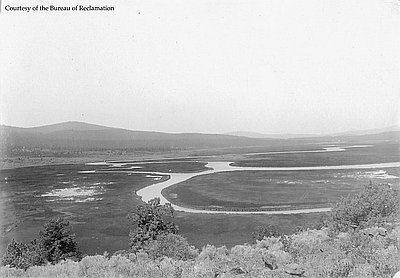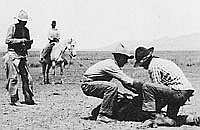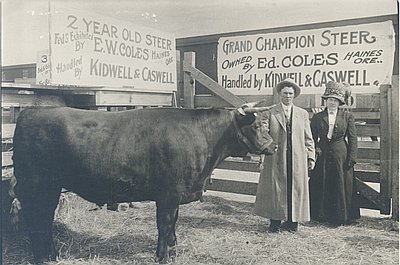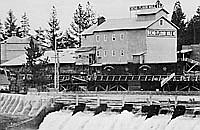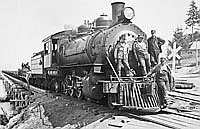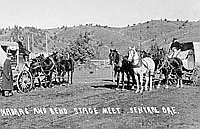Euro-American Immigrants
In 1845, a large party of American immigrants organized by Stephen Meek passed through central Oregon as they blundered west from Fort Boise searching for a short-cut to the Willamette Valley. Lost in the Malheur country and the High Desert, the party buried twenty-four members before they descended the Deschutes to The Dalles. In 1851, a small party organized by Thomas Clark reached the Deschutes by a similar route as the Meek party, but Clark had a set of oral directions that identified the Three Sisters and Pilot Butte as landmarks. The party struck the mountains as planned then went north on the Deschutes to cross the Cascades via the Barlow Road. A few years later, the Territorial Legislature provided funds for a road over the Willamette Pass. Elijah Elliott from Lane County led a large party west from Fort Boise to cross the mountains on the new road in 1853, but he lost his bearings and the group suffered almost as badly as the Meek party before finally reaching the Willamette Pass.
Several important roads were established through central Oregon from the 1840s through the 1860s. East-west routes across the Cascades included the Barlow Road (1845) passing south of Mt. Hood. The Willamette Pass (1853) followed the southern slope of Diamond Peak and descended the Middle Fork of the Willamette. In 1853, as many as 1,500 people may have attempted this route, with 1,027 people succeeding in crossing the mountains. The Scott Trail over the MacKenzie Pass (1862) and the Santiam Wagon Road (1866) over the Santiam Pass brought Willamette valley stockmen east over the Cascades to graze their stock on the central Oregon bunchgrass.
North-south routes along the Deschutes were less challenging than routes over the Cascades and had the advantage of following the traces of the Meek and Elliott parties as well as numerous Native trails. Perhaps the best known of the north-south roads was the Huntington Road, established by J.W. Perit Huntington in 1867 as he brought supplies from The Dalles to Fort Klamath. The Huntington Road partly followed the ancient Klamath Trail from Klamath Marsh to the Columbia. The mid-nineteenth century roads were useful to immigrants passing through central Oregon on their way to the Willamette Valley or the Klamath Country.
© Ward Tonsfeldt and Paul G. Claeyssens, 2004. Updated and revised by OHP staff, 2014
Sections
Related Historical Records
Treaty with the Snake (Northern Paiute), 1865
This treaty, dated August 12, 1865, is reprinted from the second volume of Charles Kappler’s Indian Affairs: Laws & Treaties, published in 1904. J.W. Perit Huntington, Oregon Superintendent of …
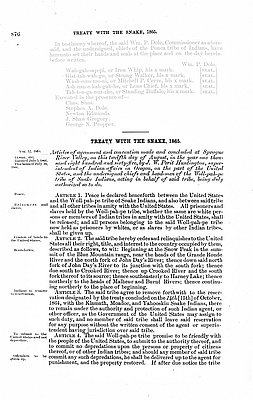
Lower Klamath Marshes
The Klamath Basin National Wildlife Refuge complex includes the Upper Klamath, Klamath Marsh, and Bear Valley Refuges in Oregon and the Lower Klamath, Tule Lake, and Clear Lake …
